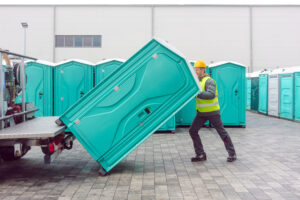It is no longer contentious as to what the most effective and convenient waste handling and disposal method is.
The use of dumpster rental is unparalleled, especially in heavy-duty projects where significant debris is expected.
To avoid additional costs posed by many rounds to local landfills and recycling plants, people are advised to leverage the various hacks of maximizing available dumpster space.
How well one packs materials in the container greatly determines the amount of space that will be utilized and how much money one can save out of that. This article gives smart tips to consider when filling your container.
Break Down Bulky Materials
Large materials such as boxes and boards reduce container space by reducing the surface area to volume ratio, allowing only a smaller size of loads.

Use your rented dumpster wisely to save space
Breaking down bulky materials, such as boxes, wood, blocks, and cabinetry, can give you considerable extra space by increasing the surface area to volume ratio. For instance, carton boxes can be opened up into flat panels, which are easier to arrange while taking significantly less space. Doing otherwise only limits your load size since these materials take up a lot of container space. Be careful when breaking some materials, such as wood, since sharp pieces can compromise your safety through injuries.
Fill all the Spaces
However much you be, in thorough arrangement of debris inside your rental container, you may not be completely effective. There will always be some empty spaces between the items, especially furniture and blocks. All these combined can amount to volumes of wasted capacity. To make good use of these and save close to a whole round to local landfill, fill up all the spaces by forcing fabric wastes such as cloths, papers, and clothes.
Layer Heaviest to Lightest
Layering heavy items at the container base creates an imbalance, limiting further packing down the line. Imbalance is not the only concern created by this kind of packing waste into the container. You also risk incurring additional charges or litigation when materials fly out of the container and end up landing on other people’s properties or estate streets. Layering heaviest to lightest allows for a balanced container with more space at the top. However, lighter materials such as cardboard, roof shingles, and drywall can be placed below or behind bulky materials such as furniture.
Compact Your Waste
After breaking bulky materials for instance drywall, cardboard, and cabinets as initially advised above, go on and compact the pieces to make additional space. However, before then, ensure the pieces are evenly distributed over the surface then step or use a sledgehammer to compact them. For increased broken pieces, ensure the layers do not go above 1 foot with a compaction as this can reduce the container space further.
Organize by Debris Type
Another smart hack of dumpster filling is to organize materials by type. This means placing flat items at the bottom, followed by bulky ones like furniture, and finishing up with lighter ones like fabrics on top. This will free up a lot of space for larger waste loads.
Avoid Tossing Debris Randomly
With loads of debris needing to be disposed of, every little space counts and even goes on to indicate how much more will fit in. Coming down to dumpster packing and filling, one aspect that often goes abused or misconstrued is ‘tossing’. While you may be tempted to just toss your materials, given the large space before you, this might come to haunt you later when you have too little space left and loads of materials to get rid of. Instead of just tossing, ensure that everything is placed systemically and strategically if you are to enjoy increased container space and save money for additional disposal rounds.
Recycle and Repurpose
Even though the term used for materials that go into dumpsters is waste, it does not necessarily mean that everything is waste. What you may consider to be wasteful may be useful to someone, hence the confusion. When upgrading to more functional and aesthetically appealing interiors, people tend to release slightly used items such as furniture, appliances, and cardboard that can be repurposed or given a few touches to bring them to good condition. Instead of such items taking up space for disposable items, consider donating or selling them and see how much additional space that will give you.
By planning beforehand and loading your dumpster strategically, you can significantly increase the amount of debris it can hold and avoid the need for additional disposal rounds. You can also reach out to your provider to help you have the best possible experience.




